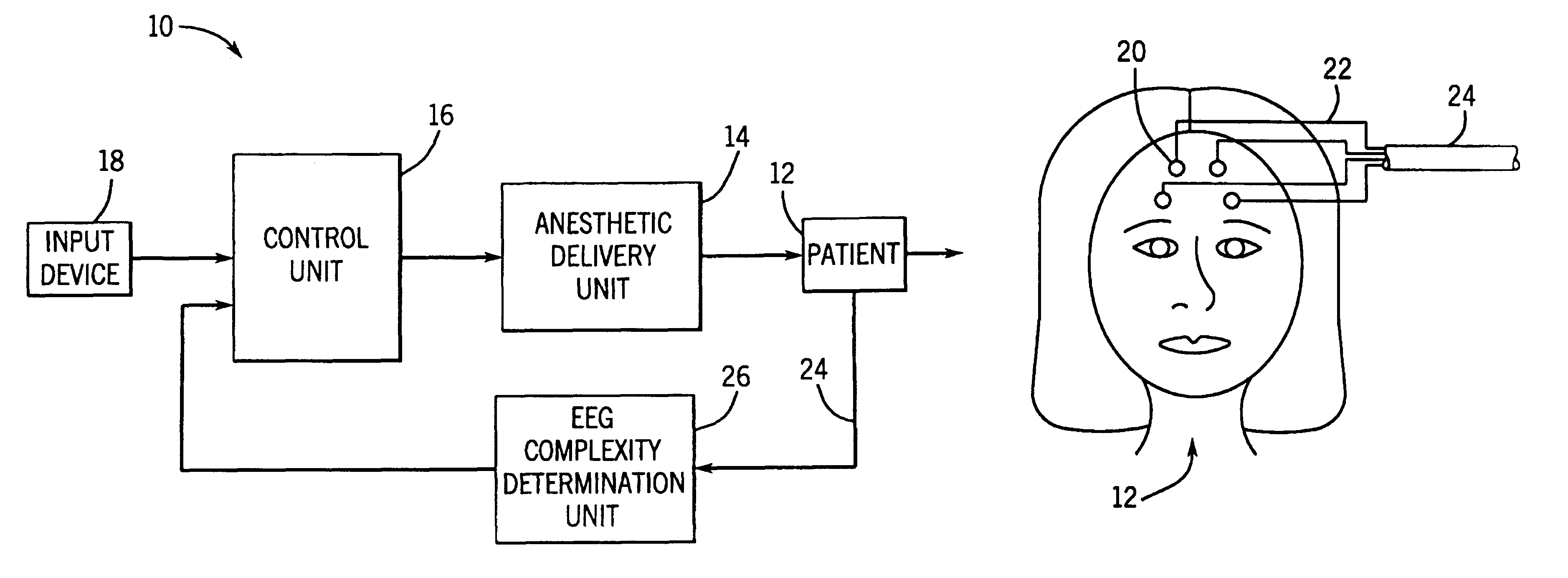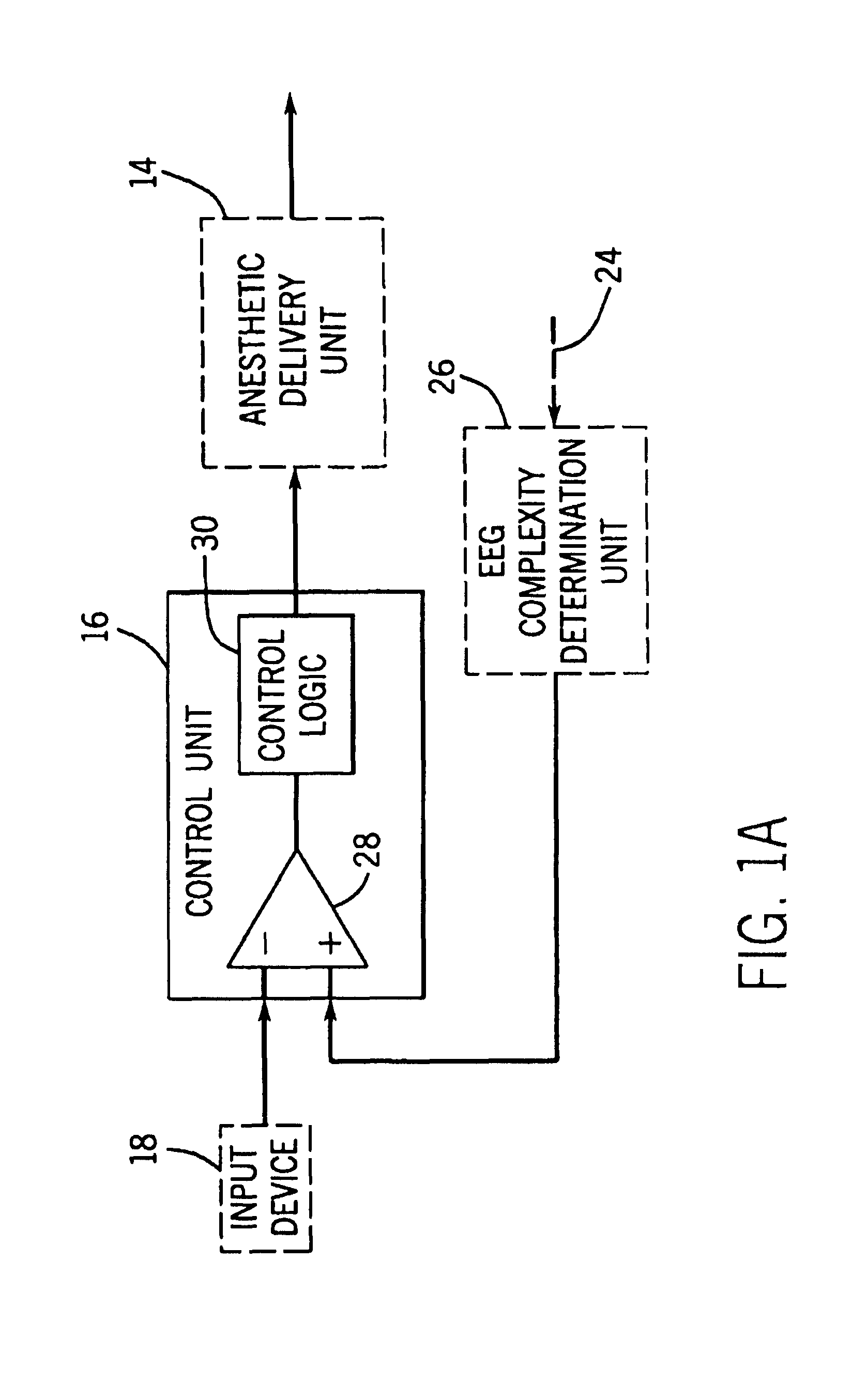Closed loop drug administration method and apparatus using EEG complexity for control purposes
a closed loop, complexity technology, applied in the direction of flow monitors, sleep/relaxation inducing devices, sensors, etc., can solve the problems of excessive deep anesthesia, excessive hypnotic drug consumption, and traumatic experience for patients, and achieve accurate and highly responsive indication of hypnotic condition, improve the effect of drug administration
- Summary
- Abstract
- Description
- Claims
- Application Information
AI Technical Summary
Benefits of technology
Problems solved by technology
Method used
Image
Examples
Embodiment Construction
[0035]In the present invention, a quantification of the complexity of the EEG signals obtained from the patient is used to determine his / her hypnotic level and, in turn, to control the administration of a hypnotic drug to the patient in a closed loop fashion. This approach is based on the premise that neuronal systems, such as those of the brain, have been shown to exhibit a variety of non-linear behaviors so that measures based on the non-linear dynamics of the highly random EEG signal allow direct insight into the state of the underlying brain activity. EEG biopotential signals are obtained from electrodes applied to the head of the patient.
[0036]There are a number of concepts and analytical techniques directed to the complex nature of random and unpredictable signals. One such concept is entropy. Entropy, as a physical concept, describes the state of disorder of a physical system. When used in signal analysis, entropy addresses and describes the complexity, unpredictability, or r...
PUM
 Login to View More
Login to View More Abstract
Description
Claims
Application Information
 Login to View More
Login to View More - R&D
- Intellectual Property
- Life Sciences
- Materials
- Tech Scout
- Unparalleled Data Quality
- Higher Quality Content
- 60% Fewer Hallucinations
Browse by: Latest US Patents, China's latest patents, Technical Efficacy Thesaurus, Application Domain, Technology Topic, Popular Technical Reports.
© 2025 PatSnap. All rights reserved.Legal|Privacy policy|Modern Slavery Act Transparency Statement|Sitemap|About US| Contact US: help@patsnap.com



